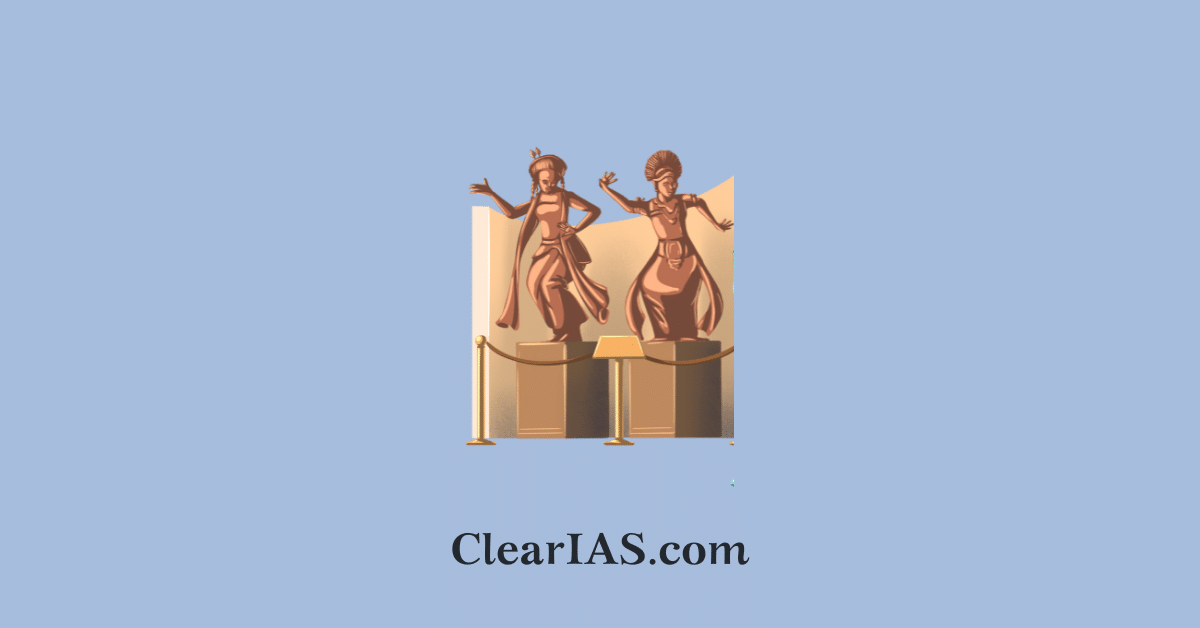
UNESCO launches the World’s First Virtual Museum of Stolen Cultural Objects on a global scale. Read here to learn more.
UNESCO has launched the Virtual Museum of Stolen Cultural Objects, a first-of-its-kind digital platform designed to help reconnect communities with their stolen heritage and address the global challenge of illicit trafficking of cultural property.
The launch took place at the World Conference on Cultural Policies and Sustainable Development (MONDIACULT 2025), held in Spain.
UNESCO’s Virtual Museum of Stolen Cultural Objects
To raise global awareness, assist in the recovery of stolen cultural items, and combat illicit trade in cultural property, particularly those looted during colonial rule or armed conflicts.
It also serves as a virtual space of remembrance and reparation, giving countries and communities digital access to their displaced heritage.
The initiative was first proposed at MONDIACULT 2022, held in Mexico.
It has now been formally launched after three years of digital development and coordination among 194 UNESCO member states.
- Host Platform: Operated by UNESCO’s Unit for the Fight against Illicit Trafficking of Cultural Property, in collaboration with INTERPOL and national heritage ministries.
Key Features:
- Digital Catalogue: Displays ~240 missing cultural objects from 46 countries, with the number expected to decline as items are recovered or repatriated.
- AI-Driven 3D Modelling: Uses AI-generated reconstructions to digitally “revive” the artefacts in high fidelity, providing virtual access to objects that are otherwise lost or inaccessible.
- Interactive Learning: Allows users to explore the history, cultural context, and significance of each item, thereby educating the public on heritage theft and colonial plunder.
- Repatriation-Oriented: The ultimate aim is physical or symbolic restitution of stolen items, ensuring ethical engagement and cultural justice.
Indian Artefacts Featured
- Nataraja (9th-century sandstone sculpture)
- Origin: Mahadev Temple, Pali, Chhattisgarh
- Depicts Lord Shiva in cosmic dance (Tandava) symbolising the rhythm of creation and destruction.
- Brahma Sculpture
- Features three faces and four arms, seated in lalitasana (relaxed pose).
- Represents the Hindu deity of creation and wisdom.
These inclusions highlight India’s continuing struggle to reclaim heritage objects removed during colonial times and illegal excavations.
Significance
- Cultural Restitution: Provides moral and digital restitution for communities whose heritage has been looted or displaced.
- Transparency and Accountability: Creates a global database to help trace, identify, and return stolen objects through collaboration among UNESCO, INTERPOL, and national governments.
- Education and Awareness: Helps sensitise the public, especially youth, about cultural heritage protection and ethical art collection practices.
- Decolonising Heritage Discourse: Enables formerly colonised nations to reclaim narratives about their heritage and resist cultural erasure.
- Support for Source Communities: Offers digital access and cultural continuity for communities that have lost physical connection to their ancestral objects.
Illicit Trafficking of Cultural Property
- The illicit trade in cultural objects is a multi-billion-dollar global problem, often linked with organised crime, conflict financing, and colonial-era exploitation.
- UNESCO’s 1970 Convention on the Means of Prohibiting and Preventing the Illicit Import, Export, and Transfer of Ownership of Cultural Property forms the legal foundation for heritage restitution efforts.
- The Virtual Museum aligns with global movements for cultural decolonisation and ethical museum practices, such as France’s return of Benin bronzes and Germany’s repatriation of Namibian artefacts.
India’s Heritage Repatriation Efforts
Period / Year |
Country / Organisation |
Returned Artifact(s) |
1947–2013 |
Various |
<20 artefacts |
2014 (Start of renewed efforts) |
United States |
Chola-period Lord Vishnu idol (via Subhash Kapoor case) |
2016 |
Australia |
Nataraja (Shiva) & Ardhanarishvara bronzes (11th–12th century) |
2017 |
Germany |
10th-century Durga Mahishasura Mardini idol from Kashmir |
2018 |
United States |
12 idols incl. Parvati, Vishnu, Ganesha |
2021 |
United States |
157 antiquities worth $3.5 million. Included Chola bronzes, terracotta figurines, stone sculptures, and miniature paintings. |
2022 |
Canada, Australia |
9th-century Nataraja idol (Canada); 29 artifacts (Australia) |
2023 |
United Kingdom |
13 sacred Tamil temple artifacts |
2024 |
INTERPOL / ASI |
India integrated with INTERPOL’s Works of Art Database to monitor trafficking and trace lost heritage globally. |
2025 (UNESCO Virtual Museum) |
UNESCO |
Digital listing of Nataraja (9th century) from Chhattisgarh & Brahma sculpture |
Legal & Institutional Framework in India
- Antiquities and Art Treasures Act, 1972: Regulates export and trade of cultural property.
- UNESCO 1970 Convention: India is a signatory, which enables international cooperation for recovery.
- ASI’s Antiquities Cell: Coordinates with CBI, INTERPOL, and foreign governments for retrieval.
- Cultural Diplomacy Initiatives: Led by the Ministry of Culture and the Ministry of External Affairs (MEA).
Conclusion
UNESCO’s Virtual Museum of Stolen Cultural Objects marks a paradigm shift in heritage justice and digital diplomacy.
By combining AI technology with cultural ethics, it not only confronts the colonial legacy of art theft but also ensures that heritage belongs to those who created it.
For countries like India, it reinforces the ongoing mission to reclaim and protect their cultural patrimony as an integral part of national identity and global heritage.






Leave a Reply